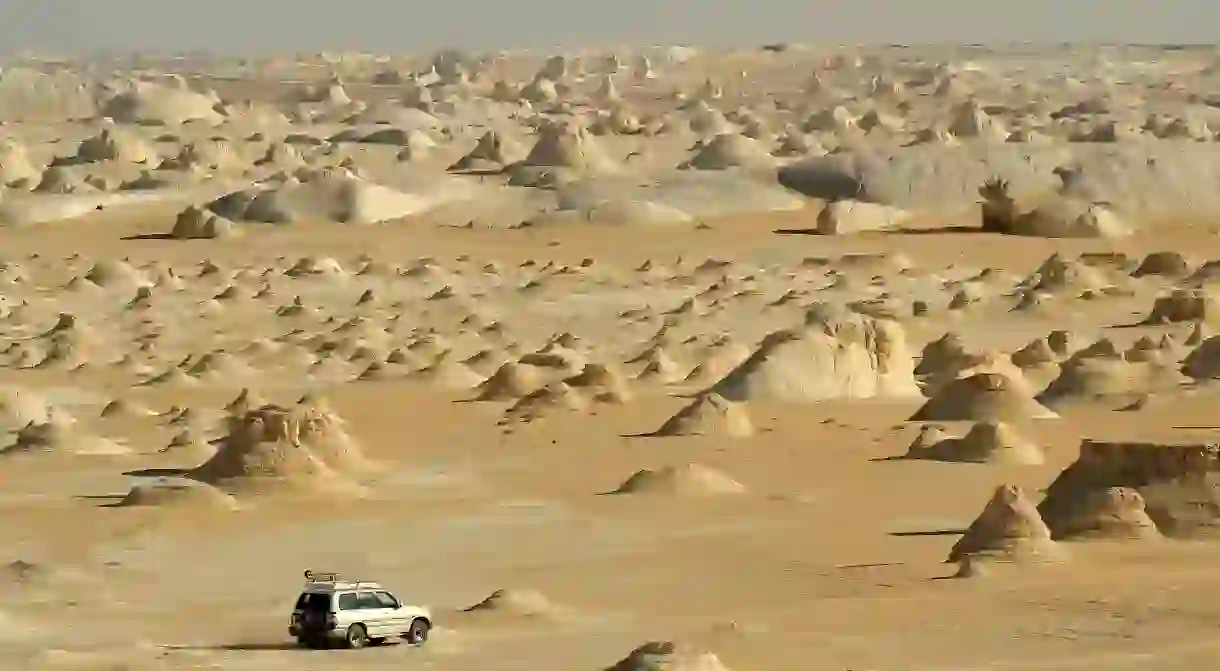The Most Beautiful Places In The Middle East

Spanning the coast of Israel to the deserts of Saudi Arabia, the Middle East is filled with some of the most extraordinary landscapes and cities in the world. From awe-inspiring natural phenomenon to exquisite historic sites reflecting each country’s heritage and culture, we list the most beautiful places in the Middle East.
The Dead Sea
Natural Feature

Dome of the Rock, Jerusalem
Mosque, Shrine

Erbil Citadel
Historical Landmark, Architectural Landmark

On a mound raised about 30 meters above the rest of the city lies Erbil Citadel, the ancient center of the Iraqi city of Erbil, and the oldest continuously occupied settlement in the world. The houses along the exterior of the citadel form a fort-like structure, while the interior is filled with narrow alleys, archways and intricate brickwork. Erbil Citadel was added to the UNESCO list of World Heritage Sites in 2014, recognizing its immense cultural and historic significance.
Hegra
Historical Landmark

Located in modern day Saudi Arabia, Hegra was one of the largest cities in the Nabatean Kingdom, second only to Petra in Jordan. The city was built in the 1st century AD, and originally consisted of a residential area and a necropolis. Of this, 131 colossal, astonishingly detailed tombs remain, cut into the rock faces. Hegra was considered for a long time to be cursed and was avoided by locals and travelers, leading to its extraordinary preservation.
Jeita Grotto
Natural Feature

Jeita Grotto consists of two interconnected limestone caves located in the Nahr al-Kalb valley in Lebanon. The upper grotto, which is accessible by walking, and the lower grotto, which is viewed from a rowboat on a lake winding through the cave. Both grottos feature awe-inspiring natural creations, including stalactites and stalagmites, mushrooms, columns and curtains. The glittering water, multi-colored rocks and dramatic formations create an ethereal, otherworldly atmosphere rarely experienced elsewhere.
Khor al-Udaid
Natural Feature

One of the Middle East’s most unique landscapes, Khor al-Udaid features an extraordinary juxtaposition of desert and sea on the Qatari coast of the Persian Gulf. By day the sea smoothly draws up amongst the soft white sand dunes, creating a beautifully clear and still inland sea, before retreating again at night. During sunsets, the landscape becomes all the more glorious, reflecting a myriad of rich colors on the sparkling sands and waters.
Luxor
Museum, Architectural Landmark, Historical Landmark

Often called the world’s greatest outdoor museum, Egypt’s Luxor overflows with beautiful ruins, mosques and temples, which come together to make the city one of the most extraordinary in the Middle East. The Karnak Temple features iconic rows of sandstone columns and wonderfully preserved friezes, while over 50 tombs lie in the dramatic Valley of the Kings, including the stunning tomb of Tutankhamen, surrounding visitors with glimpses into Egypt’s rich cultural past.
Musandam Fjords
Natural Feature

Separated from the rest of Oman by the UAE, the Musandam Fjords located on the Strait of Hormuz incorporate the dramatic scenery of the famous Norwegian fjords with the natural beauty of the Arabian Peninsula. Ragged, rocky mountains descend to the water in sheer cliff faces, with tiny coastal villages interspersed among the crags. Although the mountain scenery is quite sparse, the water teems with wildlife, making it one of the best places for scuba diving in the area.
Nasir al-Mulk Mosque
Mosque

Petra
Historical Landmark, Ruins

Known as the rose-red city for the vibrant color of its sandstone, Petra is one of the world’s most famous archaeological sites and was named one of the Wonders of the World by the New7Wonders Foundation. The capital of the Nabatean Kingdom, Petra was an important trade and cultural center for several centuries before being largely abandoned. Although much of the city has been destroyed, the numerous tombs, temples and streets which remain are indescribably beautiful.
Shah Square
Historical Landmark

The monumental Shah Square in Isfahan, Iran is one of the largest and most impressive squares in the world. Constructed in the early 17th century and featuring buildings from the country’s Safavid era, the square brings together some of Isfahan’s most beautiful and culturally important sites, with the stunning Shah Mosque, the Sheikh Lotf Allah Mosque, the regal Ali Qapu Palace and the bustling Isfahan Grand Bazaar forming the square’s four sides.
Sheikh Zayed Mosque
Mosque

Socotra Archipelago
Natural Feature

Lying midway between the Arabian Peninsula and the Horn of Africa, the Socotra Archipelago is a collection of four small islands belonging to Yemen, and features some of the world’s most stunning landscapes. Due to its isolated nature, a third of the plant life is unique to the island, including the striking dragon blood tree and large exotic coral reefs, while undisturbed beaches and crystal clear waters make the islands a tropical paradise.
The White Desert
Park, Natural Feature

Situated in the dramatic Farafra depression in Western Egypt, the White Desert is astoundingly beautiful, featuring miles upon miles of unusual, otherworldly rock formations formed millions of years ago when the surface of the desert was covered in a layer of chalk. Today they teeter above the soft sand, punctuating the otherwise typical landscape with their dramatic forms. The White Desert is particularly spectacular at night time, when the moonlight and stars lend it an ethereal glow.













